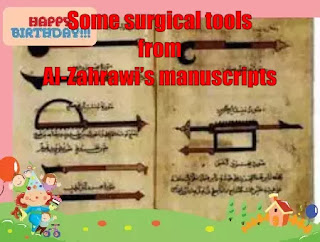Epic of Gilgamesh
 |
| Epic of Gilgamesh |
Definition
The Epic of Gilgamesh is an ancient Sumerian poem that tells the story of Gilgamesh, a king of Uruk who embarks on a quest for immortalit.
The Epic of Gilgamesh was written in cuneiform, the oldest known form of writing in the world, the first threads of the Gilgamesh narrative can be found in five Sumerian poems, other versions include those written in the Elamite, Hittite, and Hurrian languages.
The most famous version is the Standard Babylonian Version, written in Akkadian (a language written in cuneiform, which was a diplomatic language in the 2nd millennium BC).
It begins with five Sumerian poems about Bilgamesh (Sumerian for "Gilgamesh"), king of Uruk, dating from the Third Dynasty of Ur (c. 2100 BC), these independent stories were later used as source material for a combined epic in Akkadian.
It was discovered for the first time in 1853 AD in an archaeological site by chance, it was later known that it was the personal library of the Assyrian king Ashurbanipal in Nineveh in Iraq, the clay tablets on which the epic was written are kept in the British Museum, the tablets are written in the Akkadian language and bear at the end the signature of a person named Shin-iqi-unini, who Some believe that he is the author of the epic, which some consider to be the oldest story written by man.
The importance of the Epic of Gilgamesh
Countless studies have been written about this epic, and it has been subjected to criticism, scrutiny and treatment.
However, we still follow new studies about it from time to time, and read novels, stories, and creative treatments derived from its inspiration, the secret of this interest and admiration is that this epic is still shrouded in the veil of imagination, cloaked in the guise of myth, and diagnoses the reality of man and his eternal problems, around which the eternal question revolves, What is the purpose of life?! Why do we die after we came to the arena of life and walked its paths?!
There is no definitive answer to these questions, true literature is that which addresses what science cannot do, confronts a person’s psychological crises, heals his pain, and illuminates his hopes.
.. From here we can know the secret of this global interest in the Epic of Gilgamesh, which takes us into spaces far from tragic reality, to an ideal world full of goodness, truth, and beauty.
Depending on how you want to read the epic, it can take many forms, the Epic of Gilgamesh can be considered a biography of a great king, a love story, a comedy, a tragedy, a thrilling adventure, or perhaps an anthology of ancient stories.
All of these elements are present in the narrative, and the diversity of the text is matched only by current literary development. Perhaps surprisingly, given its extreme antiquity, the epic is a masterful mixture of complex existential questions, rich imagery, and dynamic characters.
This epic mixed the real with the mythical, reality with fantasy, and its realism was embellished with wisdom, and its imagination was cloaked with symbolism. It is realistic in terms of human dealing with life and death, and it is symbolic because its excessive events have deep connotations, and its myth has far-reaching goals.
Regarding this idea, Dr. Ali Al-Qasimi says: “Gilgamesh’s dismay after the death of his close friend Enkidu is a feeling that every human being experiences when he loses someone dear to him.
As for Gilgamesh’s overthrow of the fortified walls, his fight with the raging heavenly bull, and his struggle with the genie “Humbaba” who blocked his way in the cedar forest symbolizes man’s demolition of the barriers that hinder his communication with his fellow man, and the struggle between good and evil.
the story of this epic
The story begins with Gilgamesh ruling the city of Uruk as a tyrant, and to keep him busy, the Mesopotamian gods create a companion for him; the hairy wild man Enkidu.
Gilgamesh attempts to civilize Enkidu, it is a feat he achieves through ingenious means, by having Enkidu spend a week having sex with the wise priestess Shamhat, whose Akkadian name suggests beauty and sensuality, and literally translates as seductres.
Gilgamesh and Enkidu become inseparable friends, and embark on a quest for lasting fame and glory. Their actions upset the gods, leading to Enkidu's early dea.
The moment of Enkidu's death constitutes a pivotal point in the narrative, as the love that bound Gilgamesh to Enkidu changes the main character in the epic, and then his death leaves an impact on Gilgamesh's heart, leaving him frustrated and afraid of death
Dressed in the skin of a lion, the hero travels to find a long-lived flood survivor, Utanapishtim (often compared to the prophet Noah). After a perilous journey in which he narrowly escapes death, Gilgamesh finally meets Utanapishtim, and seeks the secret of immortality.
In one of the earliest literary anti-climaxes, Utanapishtim tells him that he does not have it, and the story ends with Gilgamesh returning home to the city of Uruk.
Literary Devices of this epic
Epic Simile
The epic employs epic similes, extended comparisons that enhance the grandeur and scope of the narrative.
Repetition
Repetition of key phrases and motifs adds rhythm and emphasis to the story.
Symbolism
The epic uses symbolism to convey deeper meanings and themes, such as the Cedar Forest representing the challenges of life.








